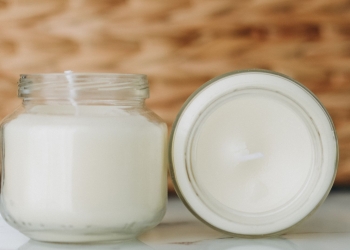Dining is not just about nourishing the body but a social and cultural experience that involves a unique set of customs and traditions. Cutlery etiquette, or the rules governing the use of knives, forks, spoons, and other utensils, plays a significant role in making dining a refined and enjoyable experience.
Whether you’re dining in a formal setting, at a casual restaurant, or in the comfort of your own home, understanding and practicing the etiquette of cutlery can help you navigate the complexities of the dining table with grace and confidence.
This article will delve into the world of etiquette related to cutlery, exploring the history, basic rules, and some advanced tips to elevate your dining experience. From understanding the roles of different utensils to mastering the art of eating gracefully, we’ll cover it all.
A Brief History of Cutlery
Cutlery, which refers to the utensils used for cutting, preparing, and consuming food, has a rich history that dates back to ancient times.
The word “cutlery” itself comes from the Middle English word “cuteler,” derived from the Old French “coutel” or knife. Cutlery was initially made from materials like stone, bone, or wood. It wasn’t until the Middle Ages that metals such as iron, bronze, and later, stainless steel, became the standard materials for cutlery production.

The evolution of cutlery etiquette is closely tied to the development of fine dining in Western culture. The emergence of the fork, for example, played a pivotal role in changing the way people ate and the etiquette that surrounded dining. Historically, forks were considered a luxury item and were used primarily by the wealthy.
The use of cutlery in a formal dining setting became more prevalent during the Renaissance in Europe, where elaborate dining rituals and table settings were introduced. This period marked the beginning of the development of specific rules and guidelines for the proper use of cutlery.
The Basic Rules of Cutlery Etiquette
1. Placement of Cutlery
When you first sit down at the dining table, take note of the arrangement of cutlery. The fork will be on the left side of your plate, and the knife and spoon will be on the right side. The idea is to start from the outside and work your way in as the courses progress.
2. Handling Cutlery
Hold cutlery properly to ensure a graceful dining experience. Place your index finger on the back of the fork’s neck, and your thumb and middle finger on the front of the handle. When using a knife, hold it with your dominant hand while using the fork with your non-dominant hand for assistance.
3. Cutting Technique
When using a knife, apply gentle pressure rather than exerting force. Use a sawing motion to cut through food, and always cut small, manageable bites. Avoid holding the knife like a pencil or stabbing food with it.

4. Fork Use
Forks are often used for picking up food and bringing it to your mouth. Keep the tines of the fork pointing downward, and avoid loading your fork with an excessive amount of food.
5. Spoon Etiquette
When using a spoon, hold it like a pencil and scoop food towards your mouth. Do not slurp or make noise when eating soup or other liquid-based dishes.
6. Resting Position
If you need to pause during your meal, rest your cutlery on your plate. Place the knife blade down and the fork tines down to indicate that you’re still eating. If you’ve finished, lay your cutlery across the plate to signal that you’re done.
7. Napkin Usage
Unfold your napkin and place it on your lap immediately upon sitting down. Use it to dab your mouth, but do not use it as a tissue for blowing your nose.
8. Continental vs. American Style
There are two main styles of using cutlery – the continental style, where the fork remains in the left hand and the knife in the right, and the American style, where the fork is switched to the right hand after cutting with the knife. The continental style is considered more elegant and is often preferred in formal settings.

Elevating Your Cutlery Etiquette
While the basic rules are essential, there are additional ways to enhance your cutlery etiquette and dining experience
1. Chopstick Etiquette – In Asian cultures, particularly China, Japan, and Korea, chopsticks are the primary eating utensils. Learning to use chopsticks correctly and respecting local customs regarding their use can greatly enhance your dining experience in these regions.
2. Specialized Utensils – Depending on the cuisine, you may encounter specialized utensils such as sushi chopsticks, seafood crackers, or escargot tongs. Familiarize yourself with the proper use of these utensils to avoid any awkward moments.
3. Finger Foods – Some dishes are meant to be eaten with your fingers, such as burgers, sandwiches, and some appetizers. In such cases, always use your napkin to clean your fingers afterward.
4. Table Setting Knowledge – Understanding how to set a table properly can also enhance your cutlery etiquette. Know where each utensil should be placed and what it is used for.
5. Soup and Bread – When eating soup, tilt the spoon away from you to avoid slurping. For bread, tear or cut small pieces and butter them individually, rather than buttering an entire slice.
6. Dessert Cutlery – When enjoying dessert, use the appropriate utensils. Dessert forks and spoons are typically smaller and designed for the purpose. For example, a dessert fork may be used for a fruit tart, and a dessert spoon for ice cream.
7. Wait for the Host – In formal settings, always wait for the host or the most senior person to start the meal or signal that it’s time to eat.
Cultural Considerations
Dining etiquette can vary significantly from one culture to another, and it’s essential to be aware of these differences when dining with people from other backgrounds. Some cultural nuances include –

1. Japanese Dining – In Japan, it’s customary to say “Itadakimasu” before a meal to express gratitude for the food. Also, never stick chopsticks upright in a bowl of rice, as it resembles a funeral ritual.
2. European Dining – In Europe, the continental style of eating is prevalent. Additionally, using bread to mop up sauce or gravy is often appreciated.
3. Indian Dining – In India, it’s common to eat with your right hand, while the left hand is considered unclean. Using your left hand for eating can be seen as disrespectful.
4. Middle Eastern Dining – In Middle Eastern cultures, it’s polite to accept second servings and to finish everything on your plate to show appreciation for the meal.
5. Chinese Dining – In China, it is considered polite to leave a small amount of food on your plate, as finishing everything may imply that you were not served enough.
6. Mexican Dining – In Mexico, it’s customary to eat tortilla-based dishes with your hands. Tacos, for example, are meant to be picked up and folded to eat.
Wrapping Up
Understanding and practicing cutlery etiquette is not just a matter of adhering to rigid rules; it’s about showing respect for the food, the culture, and the people you are dining with.
By mastering the art of using spoons, knives & forks, and other utensils, you can enjoy your meals with confidence and poise, regardless of the dining setting or the cuisine.
This etiquette is a universal language that transcends borders, connecting people through the shared experience of enjoying a good meal together. So, the next time you sit down to dine, remember these tips and embrace the art of dining gracefully.







